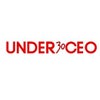Considering A Hybrid Work Schedule? Here Are The Pros and Cons Of Each ModelNot all hybrid schedules are created equal. If you or your company are considering shaking up your work schedule, consider some of the following models.
ByUnder30CEO•
Opinions expressed by Entrepreneur contributors are their own.

In case you haven't noticed, there have been a lot of changesregarding how we work. This is especially true after dealing with the pandemic in recent years. Because of the virus, many businesses worldwide were forced home to work or, at the very least, in a hybrid setting. Now it's 2023, and many businesses are still divided about the hybrid work schedule. Some are keeping it, others are switching back to the office. Still, some are testing the waters for ahybrid modelthat works for them.
Studies and surveys have taken place, and an overwhelming majority prefer the hybrid orremote work model. The reasons vary, but itmakes the employees happier and even more productive. Now, these businesses are trying out hybrid work and have found different styles depending on the industry.
Related:Remote Work Doesn't Stifle Innovation — Overlooking These Best Practices Will.
The 2/3 work schedule
The energy company BPhas adopted this model. Also known as the 3/2 hybrid model, employees are expected to be in the office two days a week and work remotely three days a week.
This style of hybrid work schedule could have a work calendar that tells the employees what days they would be at the office or not.
Pros:
- A mix of remote and in-person
- Less Commute
- Consistent Expectations
Cons:
- The schedule is not for the entire team
- Office attendance can fluctuate
- Might need more office space
50/50 hybrid policy
Employees are to split their time between the office and remotely in half. This type of hybrid model is more for office visits than a set schedule. Companies that use this include Uber, Facebook, and Microsoft.
Pros:
- Even mix in remote and in-person.
- Longer term view over weekly schedule
- Consistent expectations
Cons:
- Schedule is not for certain employees
- Lacks consistency
- More office space than needed
Bring your own hybrid
Called the Bottom-up model, this hybrid is made by the manager and the employee. Executive members will offer up different work models like the ones mentioned above. Then, each employee decides which model works best for them. If this is a team, then it would be what is best for the team. Team leaders would then ensure that their tasks are being met. This type of hybrid work schedule gives workers greater autonomy over their work.
Pros:
- Teams can customize schedule
- Employees get more say in their schedule
- Ensures that the team is working at the right time and place
Cons:
- It doesn't give full schedule autonomy to employees
- Can lead to remote work from the office
- Unhappy teams with their schedules
Flex-Time
This hybrid work schedule model is when the executives make this a business-wide policy. Flex-Time allows the employee to set their own time in their work days. They can start at any time and it is similar to asynchronous work. However, it still plans to have overlap so that there are employees working throughout the entire day.
Pros:
- More autonomy for employees
- Employees can commute outside of a rush hour
Cons:
- Inconsistent work culture
- More complex to work with
- Needs more office space
Cohorts hybrid work schedule
The companyChurnZerouses this hybrid work schedule. How this one works is that employees are put into similar-sized groups. These groups are then rotated every week when the employee is at work or at home.
The idea behind the model is that there is a rotating pattern that has the employees cross paths at a specific time period.
Pros:
- Overlap time for all employees.
- Sets expectations
Cons:
- Hard to manage
- Lacks consistency for employees
- No schedule autonomy for employees
Manager hybrid work schedule
Credit Karma andAmex都使用这个权力给等内容er to pick a hybrid work model for their employees. It makes the team more flexible in their time.
Pros:
- Allows flexibility
- Policies can change if needed
Cons:
- Office attendance fluctuates
- No full schedule autonomy for employees
- Requires office space
Conclusion
These are just some of the hybrid work schedules that are out there. More are out there as businesses try to figure out which is right for them. Picking a model can be difficult because you need to understandyour businessand your employees well enough to know what would work best.
This can take time. From days to weeks to even months. But this is just another part of the business experience. You need adaptability to work from home and at the office. If not, then it is best for you to find a job that doesn't do the hybrid work schedule.












